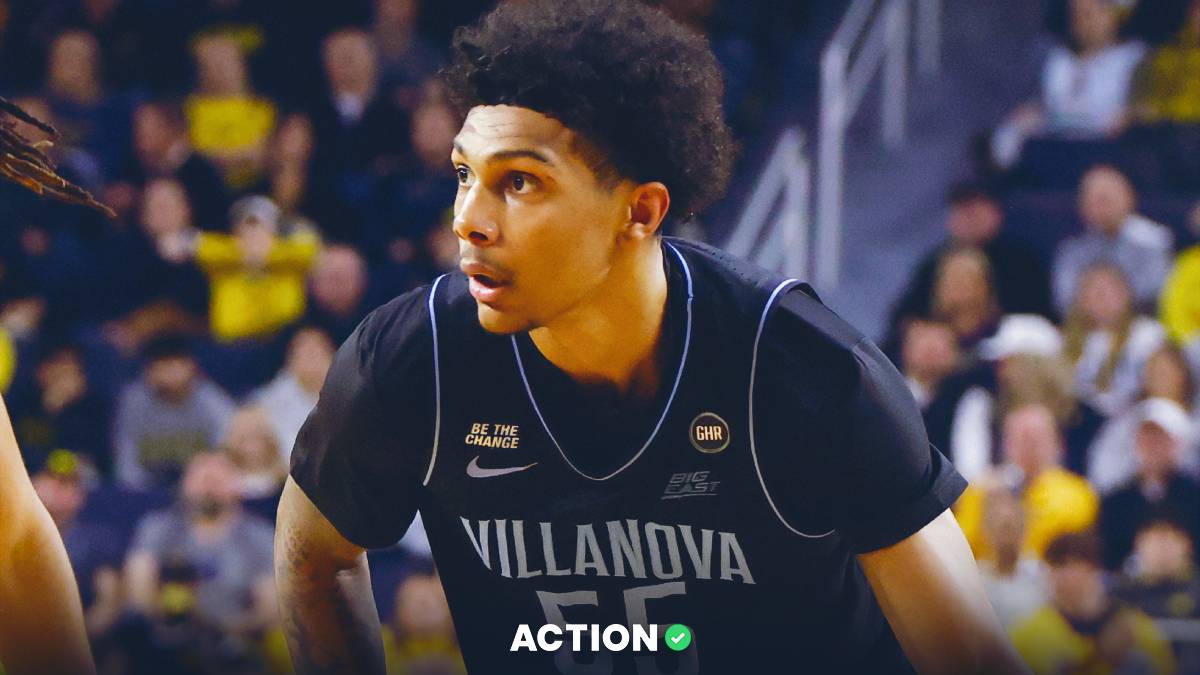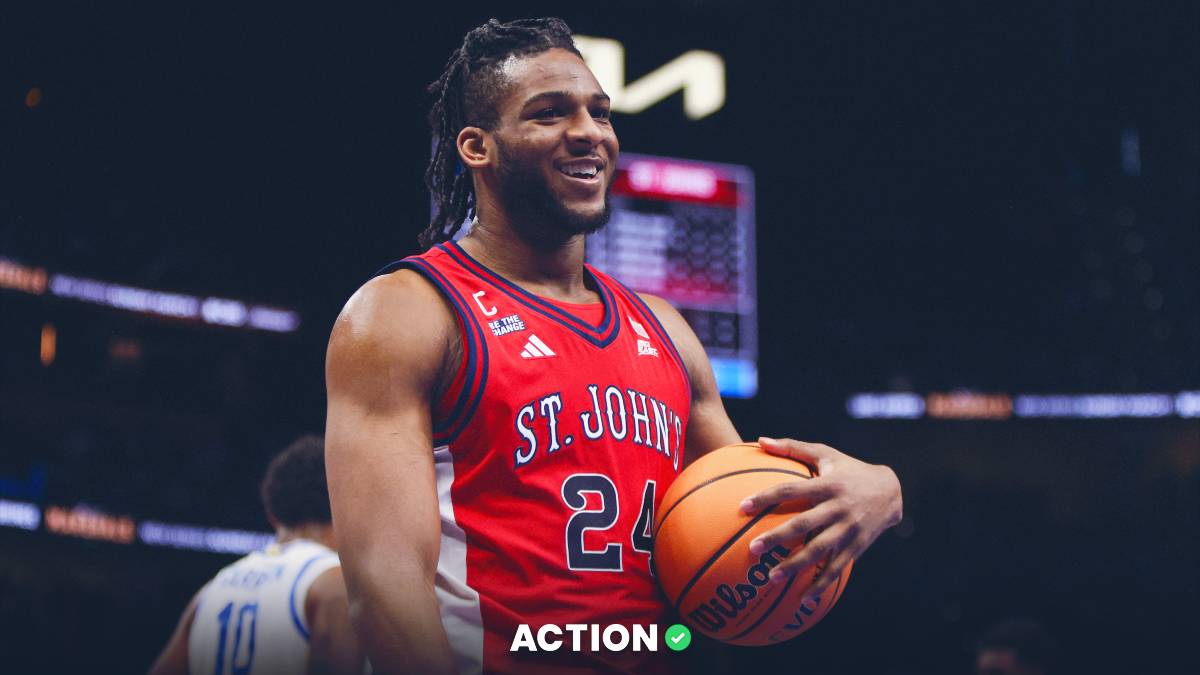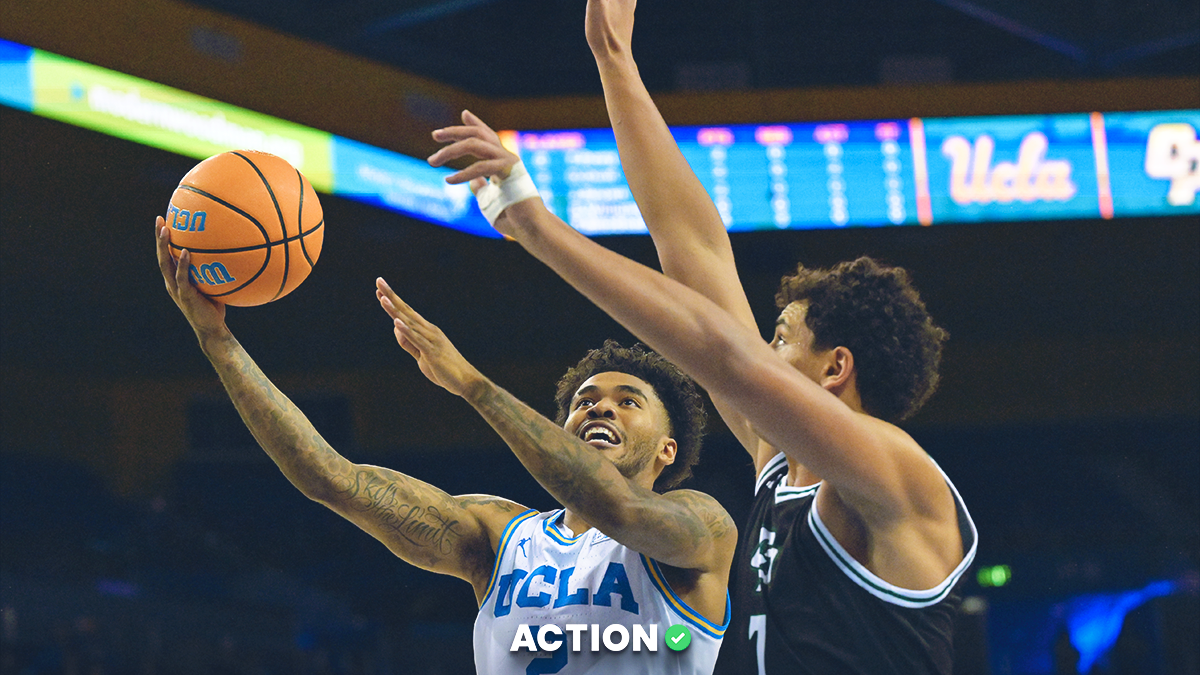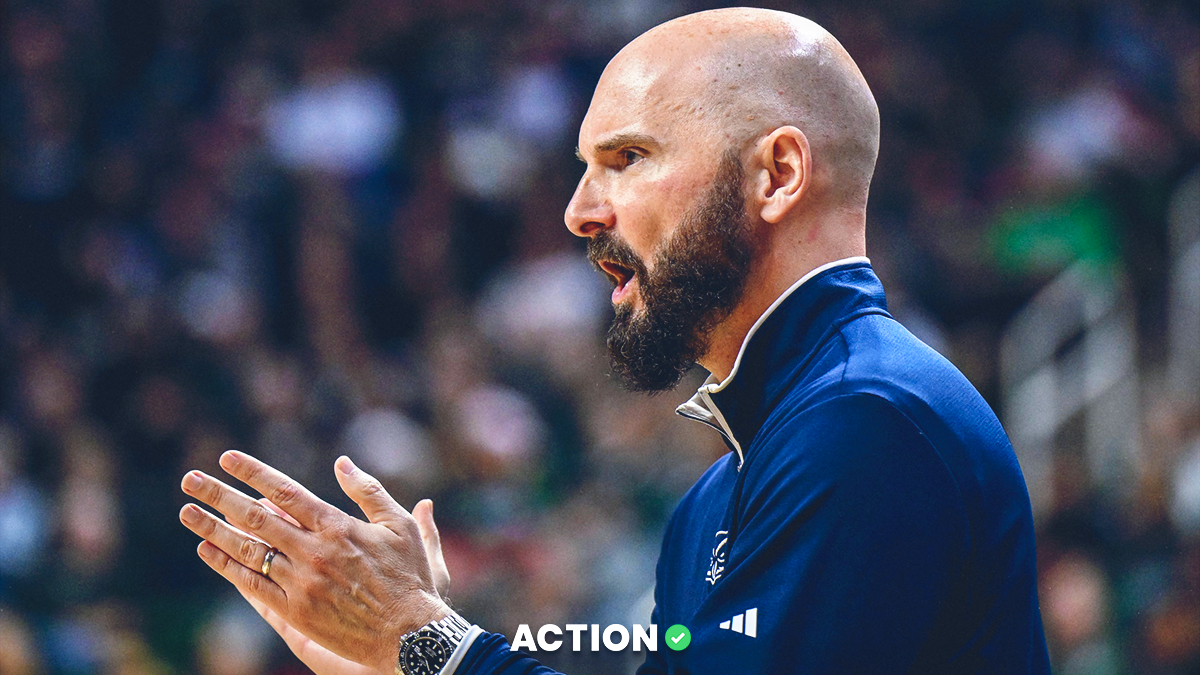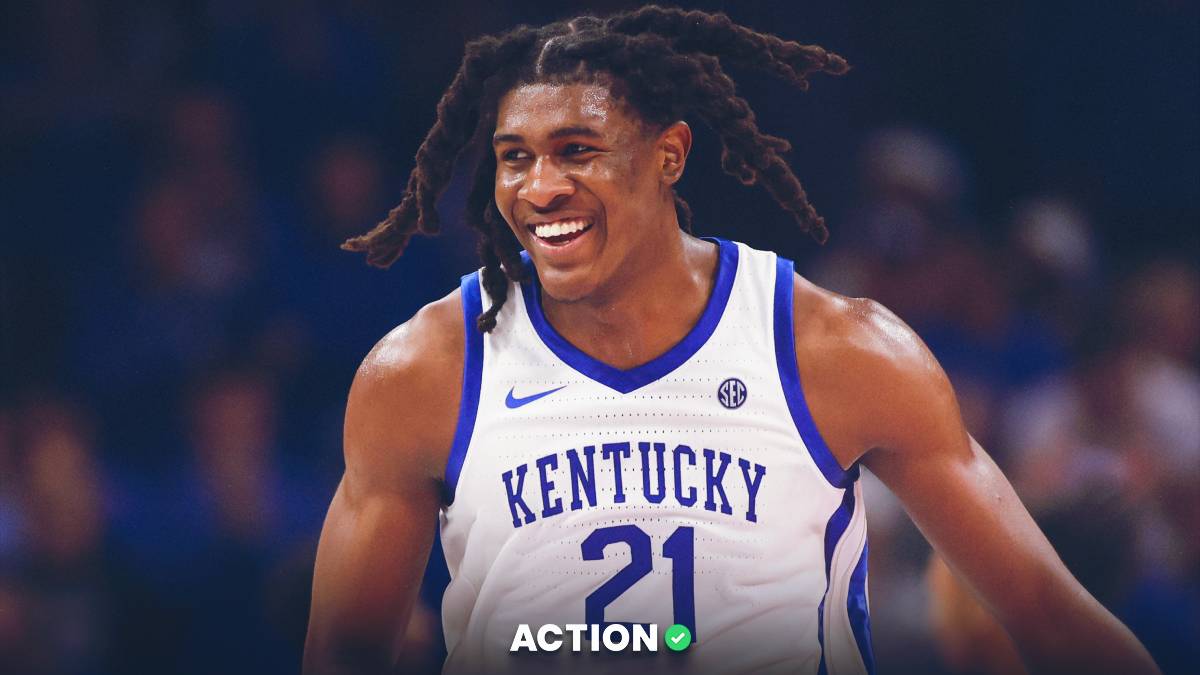1. Wichita State joins the league after dominating the MVC for several years (an absurd 68-4 in the Valley the last four seasons). Gregg Marshall's Shockers are immediately the team to beat in their new conference. The Shocker/AAC marriage really works out for both sides even without the football return for the league.
2. UConn looks to rebound after one of the more disappointing seasons in all of college basketball last year. Kevin Ollie's season turned disastrous quickly as injuries piled up, and this could very well be a make or break year for him.
3. What's going on at Memphis? Can Tubby Smith salvage this season after what was one of the worst offseasons by any program in the country (excluding those schools involved in the Adidas scandal)?
4. Cincinnati has been one of the most consistent programs in the country under Mick Cronin. They don't have a home court this year, but the Bearcats might be bristling a bit that Wichita State has suddenly taken over as the class of the league.
5. Can Johnny Dawkins keep the momentum going and send UCF to the dance after a deep NIT run in his first season at the helm? The defense is going to be elite again, but can the Knights score efficiently?
PREDICTED ORDER OF FINISH:
1. Wichita State– Gregg Marshall has one loaded team for Wichita State's first year in the AAC. Marshall being armed with five returning starters and six seniors hardly seems fair. It all starts with Landry Shamet, who turned WSU's season around last year when settled into the point and moved Conner Frankamp off the ball. Together, those two formed arguably the most efficient backcourt in the country, and Shamet became an NBA prospect when he looked like the best player on the floor at times in their NCAA Tournament game against Kentucky. Shamet and Frankamp both finished in the top 20 nationally in offensive rating per KenPom. There aren't too many, if any, backcourts in the country that can boast that. Shamet is long for a point and confident whether off the bounce or with his jump shot. The byproduct of Shamet's outstanding efficiency at the point is that Frankamp moved to a more natural off-ball position, which allowed him to utilize his dead-eye shooting touch in a more efficient manner. Both players finished at 44 percent from 3, but most importantly for Marshall, Frankamp has vastly improved his defensive game. He's no longer the weak link that gets automatically exploited in any opposing coach's game plan. The Shockers have outstanding depth in the backcourt as well with fan favorite Austin Reaves returning and the addition of JUCO combo guard (and local product) Samajae Haynes-Jones. Reaves brought a ton of what the kids would call "swag" in his freshman season, but eventually opposing coaches became aware of his shooting/passing ability, and he sort of wore down as the season progressed. WSU might lack a bit of cohesion in the backcourt to begin the year, however, as Shamet is still recovering from a stress fracture in his foot, Reaves had to have another shoulder surgery, and Haynes-Jones had to await NCAA clearance. All three should be ready for the start of the season, though. The frontcourt is as equally loaded as the backcourt. Markis McDuffie is out until December thanks to another stress fracture, but he headlines a deep and experienced wing/frontcourt unit that could dominate the league on both ends. McDuffie can fill it up from all three levels of the floor and is Marshall's most important defender because of his length, athleticism and versatility in a small lineup against opposing 4s. Zach Brown is a a capable shooter and defender on the wing and yet another senior leader for Marshall. The frontcourt duo of Shaq Morris and Darral Willis is just as important to WSU's success this year as Shamet and Frankamp in the backcourt. Morris has developed into an elite level athlete (for his frame) and rim protector and really emerged when he limited Bam Adebayo in March. Willis, meanwhile, is another plus rim protector who draws a ton of contact on the other end with his seemingly unorthodox left handed YMCA post game. Throw in another senior in Rashard Kelly coming off the bench, and WSU's frontcourt is one of the deepest in the country. Kelly is fantastic at reading his teammates' shots off the rim and thus will be one of the best offensive rebounders in his new league. Rauno Nurger is yet another senior big who knows Marshall's system and can step out and hit the three at 6-foot-10. Assuming the Shockers overcome the early injury bug, this is certainly a Final Four caliber team.
2. Cincinnati– Were it not for the addition of the Shockers, the Bearcats would be the clear cut favorite to win the AAC. Again. Mick Cronin has built one of the most consistent programs in the country, even if they've failed to make a deep postseason run in that time. Cronin loses Troy Caupain, the heart and soul of the Bearcats the last few seasons, but he's replacing him with a diamond in the rough he plucked from the NEC (a disturbing trend for that league). Cane Broome comes over from Sacred Heart to lead Cronin's offense this year, which is devastating for the Pioneers but a boon for the viewing public at large, as Broome is a lightning quick playmaker who will make an immediate impact in this league. Broome was appointment streaming on NEC Front Row while at Sacred Heart. Trust me, you're going to want to watch him play with this surrounding talent. Broome will be spelled by Justin Jenifer, another quick, pure point guard. When Cronin wants to press this year, and he's on record stating that he wants to push the tempo more with Broome at the helm, those two will be at the head of the attack. The fastest a Cincy team has played under Cronin was way back in 2010, and that was good for the 216th fastest tempo in the country. Cronin offenses are typically deliberate by design, and his defense forces long possessions as well. Now, I'm not saying that the Bearcats are suddenly going to turn into a Duggar Baucom team, but with Broome at the helm, Cincy likely plays more games with possessions in the high 60s rather than high 50s. Broome will be surrounded by a pair of hyper-efficient wings in Jacob Evans and Jarron Cumberland. Both can shoot, particularly Evans, and both can get into the paint off the bounce. They both can defend 2-4 as well. As usual, Cronin's frontcourt will be a major strength. Led by elite rim protector Gary Clark at the center of Cronin's pack line/matchup zone mashup defense, the Bearcats should once again be one of the best interior defenses, and overall defenses, in the entire country. Scoring at the rim efficiently against a Cronin defense is always a near impossibility. Last season only three teams in the country allowed a lower field goal percentage at the rim, and only six teams blocked a higher percentage of shots at the rim (both stats per hoop-math.com). In Cronin's last five seasons at Cincy, the Bearcats have ranked 11th, 13th, 11th, first and fifth in two point percentage defense, while their block rate has been sixth, eighth, seventh, second and 12th nationally in that same timeframe. That's elite. Joining Clark in the frontcourt is Kyle Washington, who is sort of the mirror of Clark. Washington has been upping his defensive game to match his versatile offensive game, while Clark has been working hard on his offensive repertoire to match his elite defensive prowess. Nysier Brooks, Tre Scott and freshman Mamoudou Diarra (a former Washington commmit) round out a deep and experienced frontcourt. If Broome significantly improves Cincy's offense, the Bearcats are a sleeper team for a deep tourney run come March.
3. SMU– The Mustangs are going to be a team that will improve tremendously as the year progresses and some new faces pick up on Tim Jankovich's ball reversal offense and matchup zone defense. Jankovich's offense is based on multiple ball handlers and interchangeable parts that look for the extra pass first and foremost. He'll have that with Jimmy Whitt coming in from Arkansas and Jahmal McMurray from South Florida (he'll be eligible in December). They'll join hyper-efficient sharp shooter Shake Milton to form a trio of combo guards who can all man the point. Throw freshman Eli Landrum into the mix, and the SMU backcourt is arguably the best in the league. The frontcourt, however, leaves a little something to be desired. Versatile Ben Emelogu and efficient, do-everything Jarrey Foster form a solid wing corps, but the 4/5 situation is a bit of mess. Jankovich will be relying heavily on Georgetown grad transfer Akoy Agau to man the middle of a matchup zone that essentially completely cuts off the paint (only seven teams allowed a lower FG attempt rate at the rim last year). Agau is talented, but the problem is he's never stayed healthy. In fact, he's a fifth-year senior who has already been granted a sixth year of eligibility thanks to an ungodly amount of injuries in his career. Freshman Ethan Chargois has to factor into Jankovich's short rotation out of necessity. If Jankovich can get a modicum of production from his frontcourt, SMU will be in decent shape thanks to the backcourt. However, any injury to anyone would basically be devastating.
4. Temple– The Owls should be an interesting team to track this year. Last season went of the rails thanks to a few big early injuries, most notably to Josh Brown. When Brown was healthy two years ago, Temple won the AAC and Brown had one of the best assist-to-turnover ratios in the country. Brown is back this year, but now Dunphy has two point guards, as Shizz Alston was handed the keys to offense a year earlier than expected, and he was outstanding! I'll be interested to see if Dunphy embraces the small ball revolution with Brown, Alston and Alani Moore on the floor at the same time, which would move burgeoning sophomore talent Quinton Rose to the 4 alongside floor stretcher Obi Enechionyia at the 5. That might be a little much to ask of Dunphy, who places a high premium on defensive rebounding, and that lineup would likely allow a LOT of extra possessions. That said, the Temple frontcourt is extremely lacking outside of Enechionyia, although Ernest Aflakpui is a strong rebounder on both ends. Defensively, it was an atypical season for a Dunphy coached team. Generally, Dunphy teams stay at home and don't really double the post, preferring to take away the 3-point line. With a lack of interior defenders, that philosophy kind of went out the window a bit, but teams still scored at will inside.(Enechionyia had a decent block rate last year, but they often came as a result of his being out of position.) If Temple rebounds and defends the perimeter like a typical Dunphy team (and both of those areas will rely heavily on Enechionyia becoming more of a two way player), and Dunphy lands on a backcourt combination that works, the Owls should return to the NCAA Tournament.
5. Houston– Kelvin Sampson has had his Cougars knocking on the door of tournament bid the last few seasons, and this year they should probably find themselves squarely on the bubble again, but the ceiling is high. Sampson has built the program up to the point where they can sustain the loss of an NBA talent like Damyean Dotson. The Cougars will be led by a stellar backcourt comprised of elite scorer Rob Gray off the ball and Galen Robinson on the ball at the point. Gray's efficiency may dip without Dotson, but JUCO transfer Corey Davis has the potential to fill in nicely in that role. Sophomore Armoni Brooks is due for a big bump this year, and Wes VanBeck is a dead-eye shooter from deep (48 percent last year). The frontcourt is a bit in flux, but a healthy Devin Davis can go a long way. He and LIU transfer Nura Zanna are a bit undersized, but they're both ferocious rebounders built like tight ends with high motors. Sampson does have some bulk coming into the frontline this year with three JUCOs – Braeon Brady, Valentine Sangoyomi and Chris Harris. Houston was a bottom half rebounding team on both ends last year in league play and was middle of the pack in two point percentage defense as well. If the bulky JUCOs can help in that regard, Houston could have a legitimate shot at an at-large bid.
6. UConn– The Huskies are one of the great unknowns in all of D1 hoops this year. Last year was an abject failure for Kevin Ollie, as injuries to Alterique Gilbert, Terry Larrier and Mamadou Diarra derailed the Huskies before the season really even started in earnest. If those three live up to their billing as four-star recruits, the ceiling is high for the Huskies, especially when you consider they'll be playing next to the best all-around playmaker in the league in Jalen Adams. Gilbert is the big piece because it allows Ollie to use a dual point guard offense, and it keeps defenses from swarming Adams on every single pick and roll. Christian Vital gained some valuable experience with all the injuries last year and will be a key contributor for Ollie in the backcourt again, as will Fordham grad transfer Antwoine Anderson, who allows Ollie to extend pressure when he's on the floor after coming from a complex zone pressure system. Ollie's defenses have always been predicated on funneling offenses into monstrous shot blockers at the rim. His teams have consistently played top-10 two point percentage defense, as well as routinely landing in the top 10 in block rate. However, Amida Brimah and Kentan Facey are gone this year, and Ollie will be relying on three newcomers to fill that roll with Diarra, Cornell transfer David Onuorah and former South Carolina recruit Eric Cobb. While those three aren't going to be the rim protectors that Brimah was, they should be able to guard outside the lane in pick and roll defense, an area Ollie's big were routinely exploited in last year. The wing corps is headlined by Terry Larrier, an athletic 6-foot-8 pogo stick who has shown a penchant for not utilizing that athleticism and versatility in the most efficient and effective way. If Ollie can get him to exploit mismatches at the 3 with his length and at the 4 with his athleticism instead of jacking up contested 3-pointers, UConn should be alright. It would also help if used his length and versatility to become a more effective defender. JUCO transfer Kwint Williams and possibly St. John's transfer Sid Wilson (Ollie is still waiting to hear from the NCAA on his waiver) give Ollie nice depth and athleticism on the wing. Assuming the Huskies stay healthy (Gilbert's shoulder is unlikely to be 100 percent to start the year), they'll probably have to produce at an NCAA Tournament bid level for Ollie to keep his job. A disturbing omen from last year is that UConn lost at home to Wagner and Northeastern with a healthy roster.
7. UCF– You know what you're going to get with UCF defensively: a dominant interior defense that allowed the second-lowest field goal percentage at the rim last year, due in large part to being the biggest team in the country (that'll usually be the case when you feature 7-foot-6 center Tacko Fall in the middle) and Johnny Dawkins' ubiquitous amoeba zone. While the defense was dominant, the offense was putrid. Some of that was due to injury, but Dawkins should see a major upgrade in backcourt/wing talent with the addition of some key transfers. Dawkins added his son Aubrey from Michigan, Terrell Allen from Drexel, and Dayon Griffin from Louisiana Tech. (Chance McSpadden also returns to the wing after missing last season due to injury.) The additions of Dawkins and Griffin are particularly key, because it surrounds point guard BJ Taylor with potentially explosive off-ball talent. Taylor was already one of the better point guards in the league, but now he can really showcase his skill set with Griffin and Dawkins around him. It should also allow Dawkins to play at a pace much more in line with what we saw at Stanford. His Cardinal teams didn't play at a breakneck speed, but they at least pushed when given the opportunity. That wasn't the case in his first year at UCF, but if the Knights are going to run more this year, it will have to come when Fall is on the bench. The depth around Fall is solid, with the versatile AJ Davis returning to his defensive stopper role at the 3/4 and Chad Brown returning as well. Dawkins also added Texas Tech transfer Rokas Ulvydas, another legit 5.
8. Memphis– On paper, Tubby Smith probably had the worst offseason in the league, losing his three best players after the Lawson family drama, and enduring whispers of ineffectiveness on the recruiting trail. Jeremiah Martin and Jimario Rivers are the only returnees for the Tigers, and Smith will be relying on a slew of JUCOs and a pair of talented freshmen to fill out the roster. Martin is the show runner for the Tigers, and he was an efficient ball handler and penetrator who drew a lot of contact off the dribble. He's also a plus on-ball defender on the perimeter. However, his jump shot, or lack thereof, is a major hole in his game. Martin's running mate in the backcourt is likely to consist of three-star plus freshman Jamal Johnson and high-scoring JUCO combo guard Kareem Brewton. Rivers, meanwhile, is a supremely versatile defender who can legitimately guard 1-5 and is pretty crafty around the rim offensively. He'll be joined on the wing by Tubby's most talented incoming freshman, David Nickleberry, and JUCO Raynere Thornton. I'm not going to take a stab at what Tubby's frontcourt rotation will look like since it's all new faces, but it will consist of whoever is rebounding well out of his ball-line defense that denies entry passes and penetration, preferring to force perimeter jump shots and grabbing the rebound and running. JUCOs Mike Parks and Kyron Davenport will see time, as will freshmen Victor Enoh and Karim Azab. There's a lot of new faces, of course, but Memphis is going to be a tough matchup from a length/versatility standpoint, and Tubby can throw out a lot of different lineups going from small ball to jumbo, depending on the situation. Defensively, this team is built to play his aforementioned ball-line defense that he's carried with him to every coaching stop. The Tigers could surprise after a tumultuous offseason.
9. Tulsa– Tulsa has the ability to surprise thanks to a wing unit that's among the best in the league. Led by Junior Etou and former Oral Roberts standout DaQuan Jeffries, it's going to be excessively difficult to matchup with the Golden Hurricane on pick and roll sets. The two slasher/shooters should pair well with returning point guard Sterling Taplin and should help him pare down the turnovers from last year that came mostly as a result of playing with practically an entirely new cast. Off the ball, Charlotte transfer Curran Scott should make an immediate impact and eat away at the minutes of seniors Jaleel Wheeler and Corey Henderson. Scott is a natural fit in Frank Haith's penetrate and kick from multiple positions offense. In the frontcourt, Martins Igbanue is a capable 5 alongside Etou at the 4. The depth on the frontline took a hit with Will Magnay leaving the team just as practices began. Haith's team last year had the fifth lowest returning minutes continuity, per KenPom, but this team should have far better on-court chemistry as well as more talent with the additions of Jeffries and Scott. I wouldn't be shocked to see Tulsa in the top half of the league at the end of the year, even in a deeper than usual AAC.
10. Tulane– I'm taking a bit of a flyer on the Green Wave, if you can call projecting a team to finish 10th in a 12 team league a "flyer." Tulane's defense was horrific last year, particulary in the paint and in transition. That's to be somewhat expected when you play at the fastest pace in the league, but it has to improve significantly if Mike Dunleavy is going to see marked improvement in his second season in New Orleans. That said, I like where Tulane is headed. Dunleavy is the latest example of the NBA positionless model seeping into the college game, and he essentially spent all of last year turning Cameron Reynolds into a three-level scorer who can beat bigger, slower 4s off the dribble and back down smaller 3s, exploiting whatever defender he gets in Dunleavy's spread pick and roll offense. Melvin Frazier is the other key returnee for Dunleavy. While Reynolds is the star offensively, Frazier is the team's best defender thanks to his wingspan and versatility on that end. He's a big cog in Tulane's press and transition offense. A key development to watch is Ray Ona Embo's transition to full-time point guard. He's a long 6-foot-4 and is something of matchup problem with his quickness for his size at that position, but he and Frazier are both in desperate need of a jump shot. 6-foot-5 freshman Shakwon Barrett could also see early minutes at the point. The wing corps, in addition to Reynolds, will be led by UNLV transfer Jordan Cornish, who has the ability to be the best player on the floor for the Green Wave. He will fit in well with Dunleavy's transition-heavy offense. The frontcourt will be an issue if Vandy transfer Samir Sehac and a pair of Sudanese freshmen, Bul Ajang and Buay Koka, are unable to contribute quality minutes immediately. That's quite a concern since, as I mentioned earlier, rim protection and rebounding were serious deficiencies for Tulane last year. Overall, I sense Tulane is on a Marshall arc, where the first year was a really rough transition to an "NBA-like" pace without the proper personnel and understanding, but the second season saw immediate positive strides.
11. East Carolina– I'm mainly interested to see what defense Jeff Lebo plays this year. Lebo should be feeling revitalized after missing much of last season on the sideline due to hip surgery. Lebo strayed from his patented trapping zone to man to man, mostly because he had one of the best shot blockers in D1 in Andre Washington. Washington is gone now, and this is a more perimeter-oriented team built to address the horrendous ECU offense that scored at just .90 points per possession in league play, which is easily the worst mark in the short history of the league. (Sadly, USF also scored at .90 points per possession last year, which tells you a lot about the quality of the league in 2016-17.) When BJ Tyson was forced to sit with injuries, freshman Jeremy Sheppard gained a ton of valuable experience and responded with the league's fifth-highest assist rate. However, there was a steep learning curve for Sheppard that resulted in a nearly 30 percent turnover rate. With Tyson back, some of the ball handling pressure is eased, and Sheppard should have a massive second season in Greenville. Hawaii transfer Isaac Fleming gives Lebo a third playmaking guard in the backcourt. Fleming doesn't have a solid jump shot, but he gets to the rim and usually finishes above it. He and Sheppard are also built defensively for Lebo's trapping zone. Wing Kentrell Barkley is ECU's leading returning scorer. Barkley has a funky offensive game, but he can function as a point forward in Lebo's motion offense. Virginia Tech transfer Seth LeDay could be a big addition on the wing if the NCAA grants him a waiver to play this year. The frontcourt is a major question mark with Washington and Deng Riak gone, as it's essentially just senior Jabari Craig and JUCO transfer Usman Haruna. The ECU offense should be significantly improved as Lebo embraces the small ball revolution, and this season should also mark the return of his ubiquitous zone.
12. South Florida– There's not a whole lot to say about USF this year in Brian Gregory's first year of a major rebuild. I think Gregory is a solid coach who was set up to fail at Georgia Tech and is probably the right man for the job to clean up the mess left by the Antigua brothers in Tampa. Gregory is a Tom Izzo disciple, so strong interior defense and rebounding the basketball are at the core of his coaching gestalt. I assume that's the first improvement you'll notice with the Bulls this year, as Antigua used a pretty awful 2-3 zone, which in turn killed USF on the glass. The problem for Gregory in that regard is that his team is far more backcourt/wing oriented. With Stephan Jiggets coming in from Fairleigh Dickinson to run the point, a pair of Penn State transfers in Payton Banks (who should lead USF in scoring this year) and Terrence Samuel, the 1-3 positions are the strength of the Bulls. Gregory did lose one of his two returnees in Troy Holston, who tore his ACL just as practices began. Gregory's frontcourt has some promise, with high-motor rebounder Tulio Da Silva (the other holdover from the Antigua era) at the 4, and USC transfer Malik Martin slotted to take over at the 5. Gregory also added a 7-foot-2 JUCO project in Nikola Scekic. Any incremental progress for USF this year will be viewed as a successful first season for Gregory.
FINAL CONFERENCE OUTLOOK: Wichita State could possibly enter the tournament as a one seed, but more likely a two or three, with Cincy a three or four. SMU and Temple sneak into the field as well. Houston and UConn enter Selection Sunday as bubble teams, but head to the NIT, along with UCF (Johnny Dawkins and the NIT, a match made in heaven). Tulsa and Memphis compete in the CIT/CBI/Vegas Whatever.
AAC PLAYER OF THE YEAR: Landry Shamet, Wichita St
ALL AAC FIRST TEAM:
Landry Shamet, Wichita St
Gary Clark, Cincinnati
Shake Milton, SMU
Jalen Adams, UConn
Rob Gray, Houston
ALL AAC SECOND TEAM:
Markis McDuffie, Wichita St
Jacob Evans, Cincinnati
BJ Taylor, UCF
Junior Etou, Tulsa
Kyle Washington, Cincinnati
Be part of the Action
Download the Sports Action app at the App Store or Google Play




